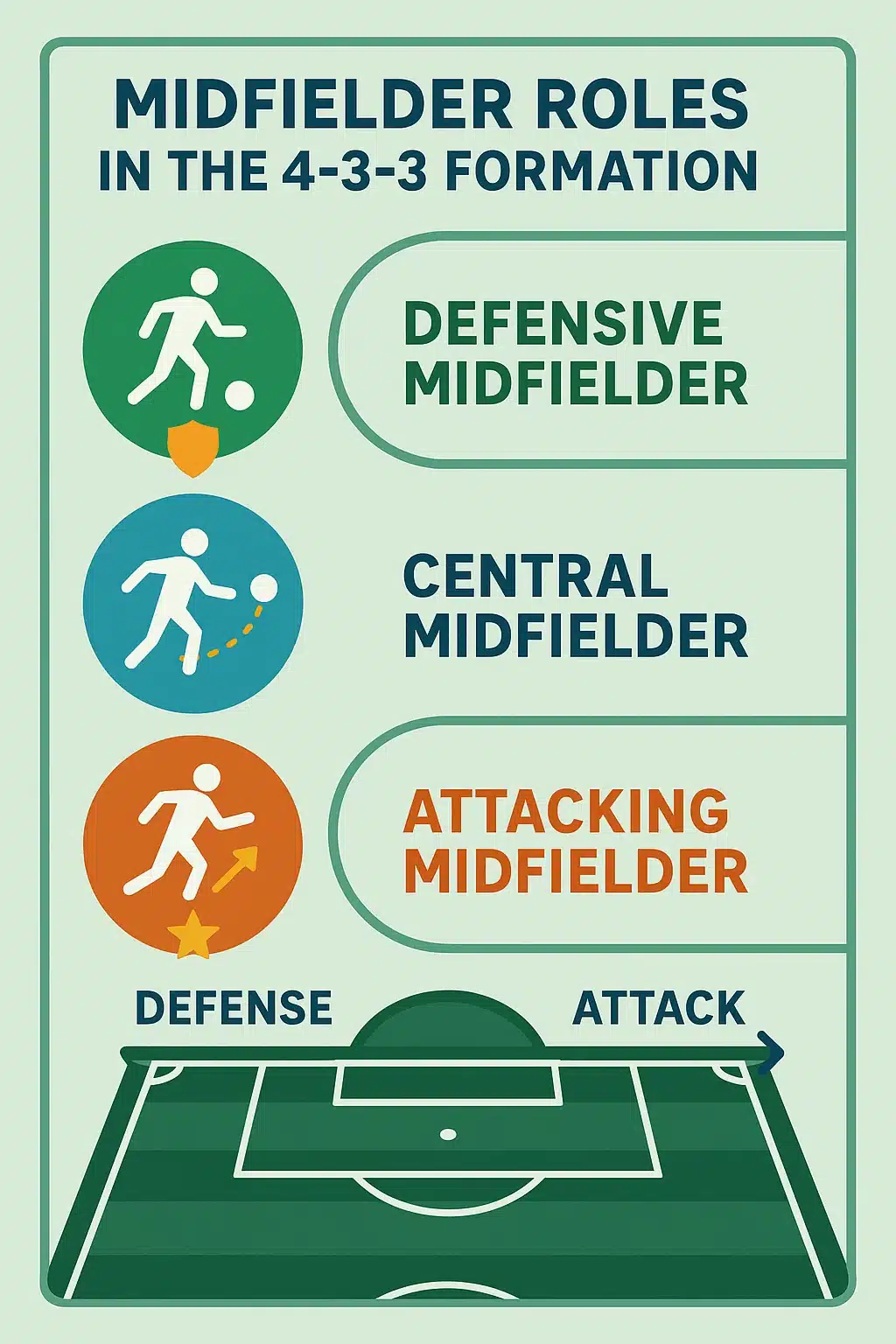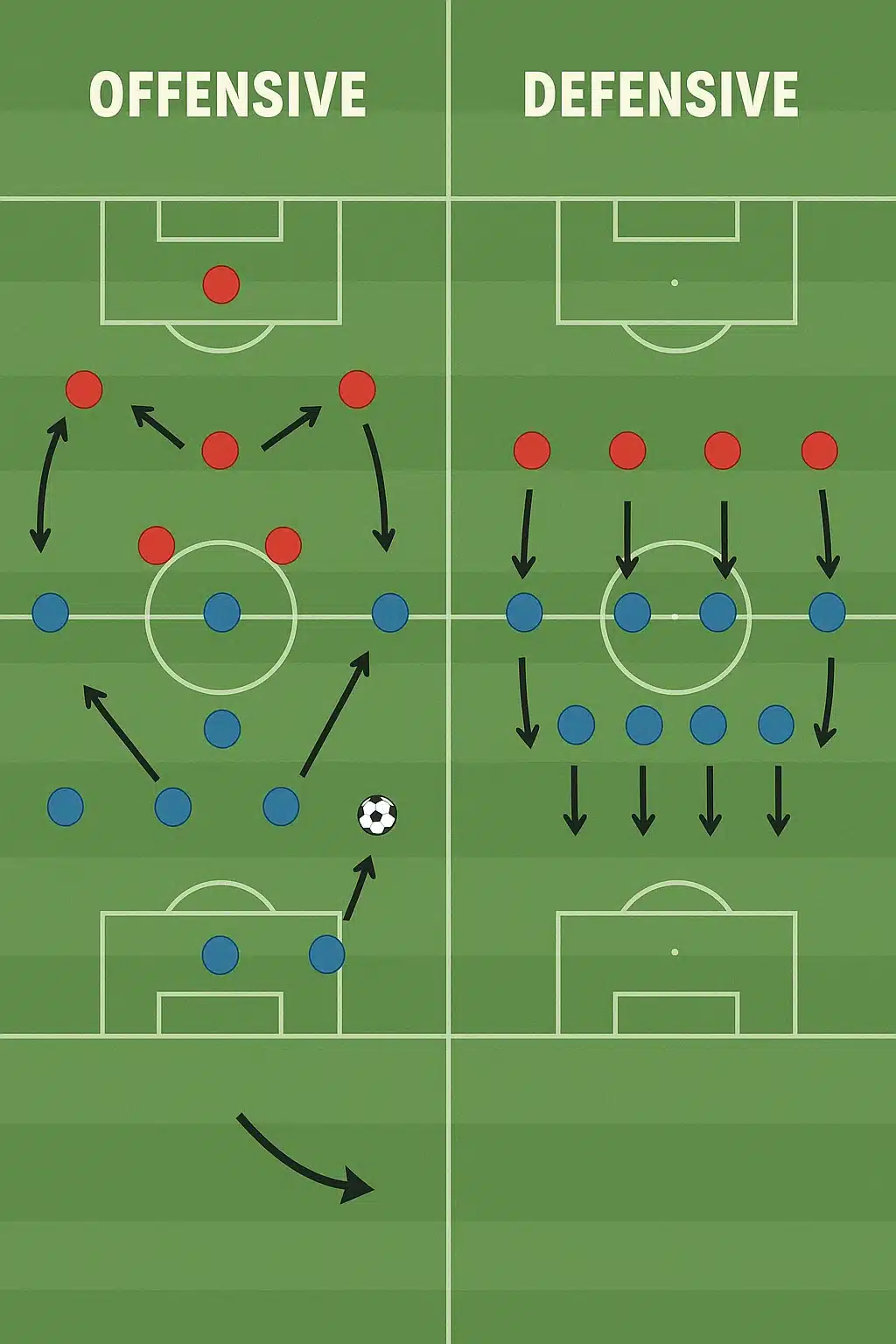Introduction to the 4-3-3 Formation: A Tactical Overview
If you’re a soccer ball lover like me, you know that understanding tactics can transform how you watch and enjoy the beautiful game. One of the most celebrated and versatile formations out there is the soccer 4 3 3 tactics system. This formation, characterized by four defenders, three midfielders, and three forwards, has shaped the playing style of many elite teams. From youth soccer fields to professional arenas, mastering these tactics can elevate a team’s performance dramatically.
In this deep dive, I’ll take you through everything from the formation’s origins and player roles to the five winning tactics that make 4-3-3 a powerhouse setup. We’ll also explore defensive strategies, practical training drills, real-world examples, and how to use data-driven analysis to optimize performance. By the end, you’ll not only appreciate the complexity behind the 4-3-3 but also be equipped with actionable insights to enhance your tactical savvy or coaching know-how.
Origins and Evolution of the 4-3-3 Formation

The soccer 4 3 3 tactics have their roots in the revolutionary tactical shifts of the 20th century. Originally emerging in the 1930s with the Dutch and Hungarian teams experimenting with fluid attacking plays, the 4-3-3 gained international spotlight with the Dutch Total Football style in the 1970s. This formation prioritizes fluidity, positional rotations, and collective pressing—all designed to overwhelm opponents with numerical superiority in key areas.
Over time, the 4-3-3 has evolved, adapting to modern demands like high pressing, fast transitions, and increased defensive responsibilities for traditionally offensive players, such as wingers and full-backs. Today, it’s a favorite among top coaches for its balance between attack and defense and its suitability for different playing philosophies.
Core Principles Behind the 4-3-3 Setup

At its heart, the 4-3-3 formation is about maintaining structural balance while allowing creative freedom. The back four provide defensive solidity; the midfield triangle offers control and fluid passing options; and the front three stretch the pitch horizontally and vertically, diversifying attacking threats.
Key principles include establishing midfield control through overloads to dictate tempo, using wingers to exploit width and isolate defenders, and encouraging full-backs to support attacks without compromising defensive shape. This balance makes the soccer 4 3 3 tactics both adaptable and potent.
The Triangular Midfield: Balancing Creativity and Control

The three midfielders in the 4-3-3 formation function as the engine room. Typically arranged in a triangle, they foster passing triangles that improve ball retention and build-up play. One midfielder, often the defensive midfielder or the “pivot,” shields the backline while distributing the ball efficiently. The other two tend to be more creative and box-to-box, linking defense with the attack.
For instance, a deep-lying playmaker in the pivot role, like Sergio Busquets during his prime, exemplifies how this role stabilizes the team. Meanwhile, the advanced midfielders supply incisive passes, support runs, and create overloads in attacking zones. Proper understanding and execution of these roles are crucial for success in soccer 4 3 3 tactics.
Wingers and Attacking Width: Stretching Opponents’ Defense

Wingers in a 4-3-3 formation are vital for stretching the opposition horizontally, creating pockets of space for midfield runners or the central forward. They’re expected not only to be fast and skillful on the ball but also tactically disciplined—cutting inside or hugging the touchline depending on the coach’s plan.
Take Mohamed Salah as a textbook example of a winger who can both score and create by exploiting high-speed counterattacks. Their positioning forces defenders into dilemmas—whether to stay wide or drift inside—often destabilizing the defensive structure.
Full-Backs’ Dual Role: Defensive Solidity and Offensive Support

Full-backs in the 4-3-3 are no longer confined to pure defensive duties. They have emerged as integral to both phases of play. Tasked with marking opposing wingers, they must be solid defensively while offering width in attack by overlapping wingers or underlapping centrally.
Teams like Liverpool have demonstrated this perfectly, with Trent Alexander-Arnold and Andrew Robertson acting almost as auxiliary midfielders or wingers, delivering crosses and creating scoring chances. This dual role requires exceptional fitness and tactical awareness to avoid exposing defensive weaknesses.
Central Forward’s Role: From Isolation to Link-up Play
The center forward, or striker, anchors the 4-3-3 attack. While traditionally the main goal scorer, in modern soccer 4 3 3 tactical setups, they often act as a link between the midfield and attack. Their ability to hold up the ball, bring wingers into play, and rotate positions makes the offense more unpredictable.
An example is Roberto Firmino, whose pressing alongside creative link-up play adds an extra dimension to the front three. Their movement constantly challenges defenders to make decisions, opening opportunities for teammates.
1. Possession-Based Build-Up Play: Creating Triangular Passing Networks
One of the most effective soccer 4 3 3 tactics is possession-based build-up. It involves controlling the ball from the back, patiently constructing play through passing triangles that maintain fluidity and angles.
Building Attacks From the Back with Full-Back Involvement
Full-backs serve as crucial outlets for center-backs to bypass heavy pressing. By positioning wide and available, they stretch opposition forward lines and open passing lanes. This also allows defensive midfielders to drop deep and receive the ball, ensuring multiple passing options and breaking lines with long balls when necessary.
Maintaining Midfield Overload to Control Tempo
The midfield triangle ensures a numeric advantage in the middle, enabling quick one-two passes, changing angles, and dictating match tempo. This overload also helps in recovering the ball swiftly after loss and minimizing counterattack threats. Teams like Barcelona have famously perfected this style, relying on exquisite ball control rather than brute force.
2. High Pressing System: Winning the Ball High and Quick Transitions
Another standout soccer 4 3 3 tactics involve a high pressing style that aims to regain possession near the opponent’s goal, launching rapid attacks.
Coordinating Pressing Triggers and Positional Rotations
Pressing triggers—like backward passes or poor touches—alert the front players to initiate pressure in unison. Wingers and forwards push defenders into mistakes while midfielders close passing lanes, forming a coordinated pressing unit that’s exhausting to break down.
Using Forward and Midfield Pressure to Force Errors
Consistent pressure forces rushed passes and ball losses in dangerous areas, allowing quick vertical transitions. This style was a hallmark of Jurgen Klopp’s Liverpool, enabling them to dominate games by combining intensity with speed.
3. Counterattacking with Speed and Precision
Counterattacking remains a powerful weapon in soccer 4 3 3 tactics, especially when combined with disciplined defensive setups.
Defensive Compactness to Enable Quick Breakouts
The team remains compact defensively, minimizing gaps between lines to absorb pressure. Once possession is regained, attackers spring forward quickly, exploiting opponents’ disorganized shapes.
Role of Wingers and Central Midfielders in Exploiting Space
Wingers sprint into space behind full-backs while central midfielders provide swift and accurate distribution. This tactic is particularly effective against teams that dominate possession but leave themselves vulnerable on the break.
4. Adapting to Opponent Styles: Flexible Tactical Variations
The beauty of the soccer 4 3 3 tactics lies in its adaptability. Coaches tailor lines to counter specific threats and leverage team strengths.
Switching Between Offensive and Defensive Midfield Triangles
Adjusting the midfield triangle by pushing one midfielder into a more defensive or attacking role can add solidity or creativity as needed. This fluidity ensures the formation matches the opponent’s style.
Adjusting Full-Back Positioning to Counter Wide Threats
Against teams with dangerous wingers, full-backs may adopt a more conservative position, collapsing the width and forcing attackers inside. Conversely, against narrower attacks, they push forward to exploit flanks.
5. Advanced Positional Rotations and Fluid Front Three Movement
Finally, advanced positional rotations disrupt defensive marking and open scoring chances.
Creating Confusion in Defensive Lines with Rotations
The front three interchange positions regularly—wingers swapping sides or the center forward moving wide—confusing defenders and creating mismatches.
Enhancing Scoring Opportunities via Dynamic Interchange
These rotations enable overlaps, underlaps, and sudden diagonal runs that break down compact defenses, making it harder for opponents to anticipate attacks.
Managing Wide Areas and Avoiding Vulnerabilities
The wide areas are often the weakest parts of the 4-3-3, especially when full-backs push high. Defensive shape must stay compact, with midfielders and wingers dropping back to help full-backs. Effective communication and spatial awareness prevent dangerous overloads.
Midfield Overload as a Defensive Shield
Midfielders play a pivotal defensive role, screening passing lanes and intercepting opposition play. This overload limits the opponent’s ability to penetrate, making the team tougher to break down.
Offensive Coordination and Build-Up Play Drills
Drills like rondos and positional small-sided games enhance passing accuracy and spatial awareness. Encouraging players to maintain triangles and think two steps ahead in build-up is key.
Pressing and Transition Exercises for Game Intensity
Simulated pressing exercises where teams must win the ball high and swiftly transition teach timing and coordination. Such drills build stamina and tactical discipline.
Counterattack Simulations and Defensive Recovery
Training players to rapidly shift from defense to attack and vice versa is essential. Drills focusing on quick outlet passes and sprinting wingers sharpen counterattacking instincts.
Case Study: Barcelona’s Possession-Based Mastery (2008–2012)
During this era, Barcelona used soccer 4 3 3 tactics to dominate possession globally. Their midfield triangle of Xavi, Iniesta, and Busquets exemplified perfect positional play and passing, supported by attacking full-backs and a fluid front three.
Case Study: Liverpool’s High-Pressing Legacy (2018–2022)
Liverpool’s use of high pressing in their 4-3-3 formation brought immense success. Their ability to win the ball high and transition fast, combined with dynamic front three rotations, made them formidable at the highest level.
Addressing Midfield Overloads by Opponents
Opponents often crowd the midfield to neutralize the 4-3-3’s control. Solutions include dropping a winger into midfield or pushing a midfielder wider to create passing lanes and stretch space.
Mitigating Risks Against Counterattacks and Wide Attacks
Overcommitted full-backs can be exposed by pacey counters. Tactical discipline—such as instructing one full-back to stay back while the other advances—and compact midfield positioning help reduce these risks.
Ensuring the Center Forward is Effectively Supported
Isolation of the striker can reduce goal threat. Using fluid front three rotations and involving midfield runners ensures the central forward receives consistent support and options.
Leveraging Player Positioning and Movement Heat Maps
Analyzing heat maps helps identify positional trends, revealing areas of congestion or underutilization. Coaches can adjust formations and rotations accordingly.
Employing Video Analytics for Opponent-Specific Tactical Adjustments
Studying opponent defensive patterns and weaknesses via video allows tailoring pressing triggers, attacking routes, and defensive shifts specifically for each match.
In wrapping up, I hope this comprehensive exploration of soccer 4 3 3 tactics has enriched your understanding of why this formation remains a favorite worldwide. It’s a perfect blend of structure and creativity, capable of adapting to various playing styles and opponent strategies.
From mastering player roles—including the crucial triangular midfield and dynamic front three—to implementing advanced pressing, counterattacking, and build-up strategies, every element contributes to a winning formula. The formation’s flexibility also means you can tailor it to fit your team’s strengths, whether coaching youth players or fine-tuning a competitive squad.
Most importantly, using data analysis and regular, focused training drills helps refine execution and overcome natural weaknesses. So, if you’re passionate about soccer and eager to improve your tactical understanding or coaching plan, I encourage you to integrate these powerful 4-3-3 tactics into your playbook. The beautiful game is always evolving, and with the right approach, so can your team’s success.
Q1: What are the best soccer 4 3 3 tactics for youth teams?
For youth teams, simplicity and positional discipline are crucial. Focus on building passing triangles in midfield, encouraging wingers to maintain width, and practicing basic pressing triggers. Teaching full-backs to balance defense and attack progressively sets a foundation for advanced soccer 4 3 3 tactics later.
Q2: How to play soccer 4 3 3 formation effectively?
Effectiveness stems from understanding player roles and maintaining tactical balance. Encourage midfield overloads for control, full-back support in build-up, coordinated pressing, fluid front three rotations, and a compact defensive shape.
Q3: What are common weaknesses of 4 3 3 soccer formation and solutions?
Weaknesses include vulnerability on wide areas due to high full-backs, and midfield overcrowding by opponents. Tactical solutions involve adjusting full-back positioning, dropping wingers into midfield, and using midfielders’ positional rotation to open passing lanes.
Q4: Which teams use soccer 4 3 3 formation successfully?
Top examples include Barcelona (possession-based play), Liverpool (high pressing), and Ajax (fluid attacking style). Each team modifies the base 4-3-3 tactics to exploit their squad’s strengths and counter opponent weaknesses.
Q5: What are good training drills for soccer 4 3 3 formation?
Effective drills comprise rondos for passing triangles, small-sided pressing games for transitions, positional rotation exercises for front three dynamics, and counterattacking simulations to sharpen speed and positioning.
- The soccer 4 3 3 tactics combine defensive solidity, midfield control, and wide attacking width.
- The triangular midfield and dual-role full-backs are pivotal for balance and creativity.
- Possession-based build-up play and high pressing are two powerful tactical approaches within 4-3-3.
- Flexibility in midfield roles and full-back positioning allows adaptation against various opponent styles.
- Advanced positional rotations by front three confuse defenses and create scoring chances.
- Defensively, managing wide zones and midfield overloads minimizes vulnerabilities.
- Data-driven match analysis enhances tactical refinement and opponent-specific planning.
Embrace these insights and strategies to truly unlock the potential of the soccer 4 3 3 tactics and elevate your team’s winning play!


